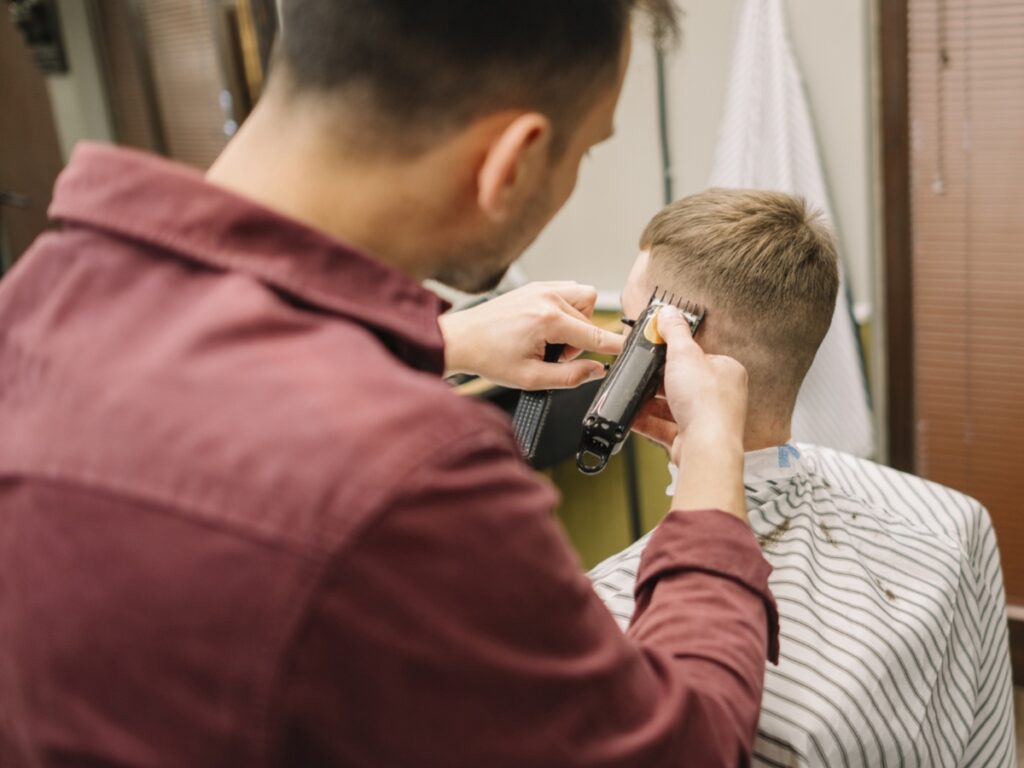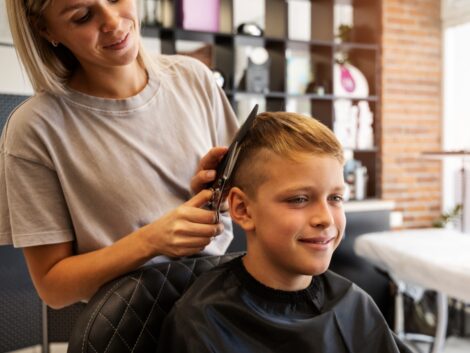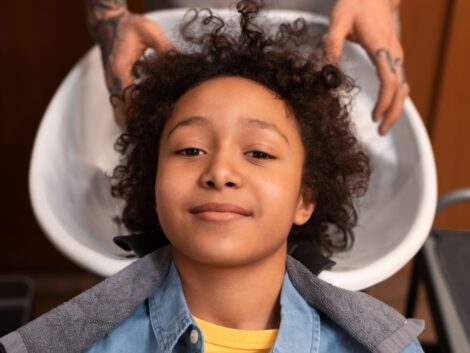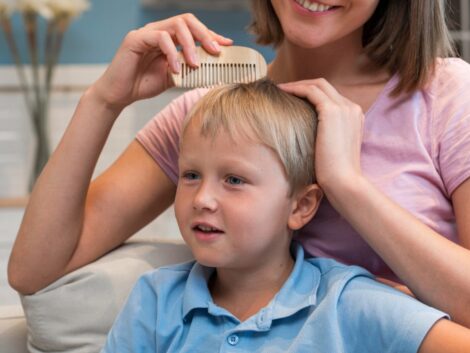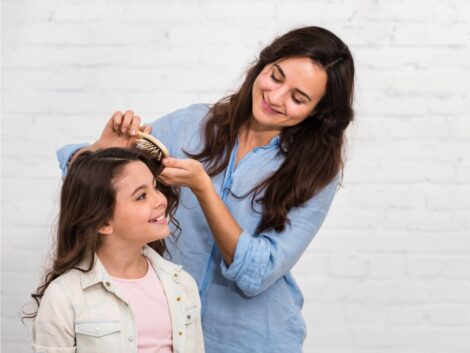Gender norms play a big role in the haircut that children get. This is because haircuts can be a great way to express yourself. How are children’s haircuts influenced by gender norms? Therefore, in this article, let’s look at how gender norms influence children’s haircuts.
In this article, we will discuss the relationship between haircuts and gender and how, as parents, this tough subject can be navigated effortlessly. Here are guidelines that will help you assess any situation, so let us get started.
Are There Any Specific Haircut Styles Associated With Different Genders in Childhood?
In the past, haircuts in children were often associated with gender. Girls were expected to have longer haircuts with specific hairstyles to look sophisticated, whereas boys were expected to have shorter hair, almost like a buzz cut.
These attitudes were due to the social and cultural attitudes at that time, but now people are coming out of this. Now, haircuts don’t define a child’s gender. However, there are traditionally some haircuts that are still associated with genders. Here are the two main ones.
Long Haircuts
Long haircuts are still associated with girls. Long, straight hair, curly hair, or any other haircut with longer hair is what girls are expected to like. But of course, nowadays, many girls choose to have shorter haircuts because it is the most practical, especially when they are young and lead an active lifestyle.
Short Haircuts
Shorter haircuts are still associated with boys. Nowadays, boys do choose somewhat longer haircuts that they can style better. But very short haircuts, like buzz cuts, are what most boys get. It is also what is more practical at a young age when kids are super active.
Except for this, there aren’t any specific haircuts that only boys or girls are expected to have. Most haircut styles are gender neutral; only the hair length might have gender associated with it.
Choosing haircuts can seem daunting, but it is super easy as long as you listen to your child and also give your own opinions. So, here are some tricks you can use to ensure that the haircuts that you choose for your child are perfect for them.
Have Communication
The first step is to have open communication with your child. Make sure to ask them what they want for their haircut. It will be helpful to give them some options so they can choose one haircut that they want. Also, this way, you can also make sure they only choose a proper haircut and do not go for something completely ridiculous.
Make sure to ask the kid if they have any concerns regarding getting a new haircut, and if they do have them, try to comfort them. This way, the haircut you choose will not only make your child happy but also meet societal expectations.
Show Support
Once the child chooses a haircut for themselves, make sure to show support to their decision. Encourage them to make more decisions on their own. This way, they will not depend on the validation of others for their decisions and will be confident in their own skin.
Educate Them
Educate your kid that there will always be people who will oppose their decision and judge them based on their haircuts. However, it is best to ignore them and not take what they say to heart. It is important to tell your child before getting a haircut as well, but do not scare them away.
Make sure to have an environment where the child can openly express themselves and take negative comments without affecting their mental health. For this, it is important that you become their support system.
What Are the Challenges Faced by Children Who Do Not Conform to Traditional Gender Norms?
If a child does not conform to traditional gender norms, they might still face some challenges. Of course, nowadays, people and other children are much more accepting compared to the past, but even now, there can be some challenges.
Some of them are listed below.
Bullying
If a child has a haircut that is not traditionally associated with their gender, bullying is a big issue in schools, especially, in younger children. Bullying can be in the form of verbal, physical, or cyberbullying. Sometimes, bullying can also be the child being left alone and not making any friends.
Family Rejection
Another challenge that some children who do not conform to traditional gender norms face is family rejection. Many families want their children to conform to what is traditionally known as feminine or masculine. So, some children can be impacted by their family rejection as well.
Discrimination
Sometimes, children can face discrimination from teachers, law enforcement, and other authoritative figures if they do not look like their gender. This can lead to the child getting depressed or developing other mental health issues.
If the child does not have an empathetic environment to grow in, it can lead to many mental health and identity crisis issues. Therefore, it is crucial for parents to make sure that their child is growing up in a supportive and nurturing environment despite the choices that they make.
How Do Children’s Perception of Their Gender Influence Their Haircut Preferences?
The child’s perception of their gender will influence everything, including their haircut preferences. Here, we will look at some ways that the child’s gender identity will influence the haircut.
Therefore, haircuts are a great tool for self-expression. So, children might choose haircuts that make them feel more like themselves. A girl might feel more like herself in short hair and vice versa. So, gender identity influences hair in this way. Of course, societal pressure and peer influence can also play a role in the hairstyle chosen by the kid.
However, media and culture can also influence children’s haircut choices. They might like what they see in someone else. Therefore, haircuts can be a form of experimentation for the child until they find what they actually like. So, each haircut is their way of finding the perfect cut for themselves.
Are There Educational Initiatives Promoting Gender-Inclusive Children’s Haircut Choices?
Yes, there are many educational initiatives working to promote gender inclusivity and challenge traditional gender norms in children’s haircut choices. Some of these are mentioned below.
Gender-Inclusive Educational Programs
Some schools have a syllabus that includes information about gender identity so children feel more represented. These initiatives help children choose the haircut that they want.
Training the Teachers
Some schools also train teachers so they know how to deal with children and their gender identities so they feel more comfortable. There are even books and other educational resources for children to read and understand.
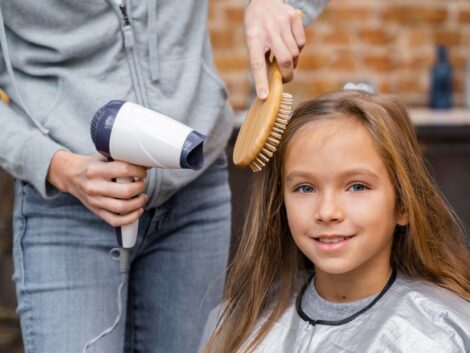
Conclusion
Children choose haircuts that represent their gender identity, and the parents have to support the children’s choices. Hopefully, this article made it easy for you to understand this complex issue. Now, you know how children’s haircuts are influenced by gender norms and what challenges they can face if they get haircuts that do not conform to gender norms.
Lastly, check out the mane caper shop.

